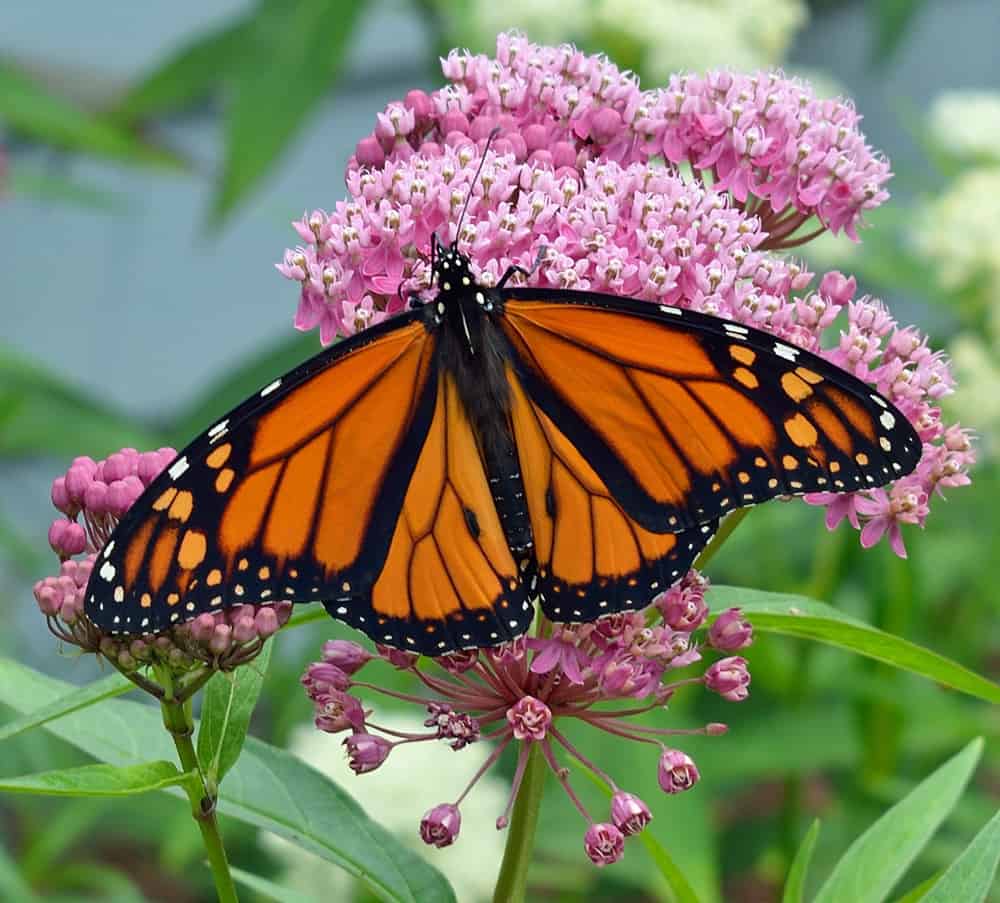Happy National Pollinator Week!
Supporting pollinators is one of our main goals here at Lauren’s Garden Service & Native Plant Nursery. Native plants support pollinators by providing food and habitat. Here are some of our tricks and favorite plants to support pollinators!
4. Have a small water source for your pollinators to rest at and drink from. A bird bath or small sandy area with a reservoir for water will do! You could also do a small pond or water feature. If you have a pond, stream, lake or river nearby this will support your winged friends.
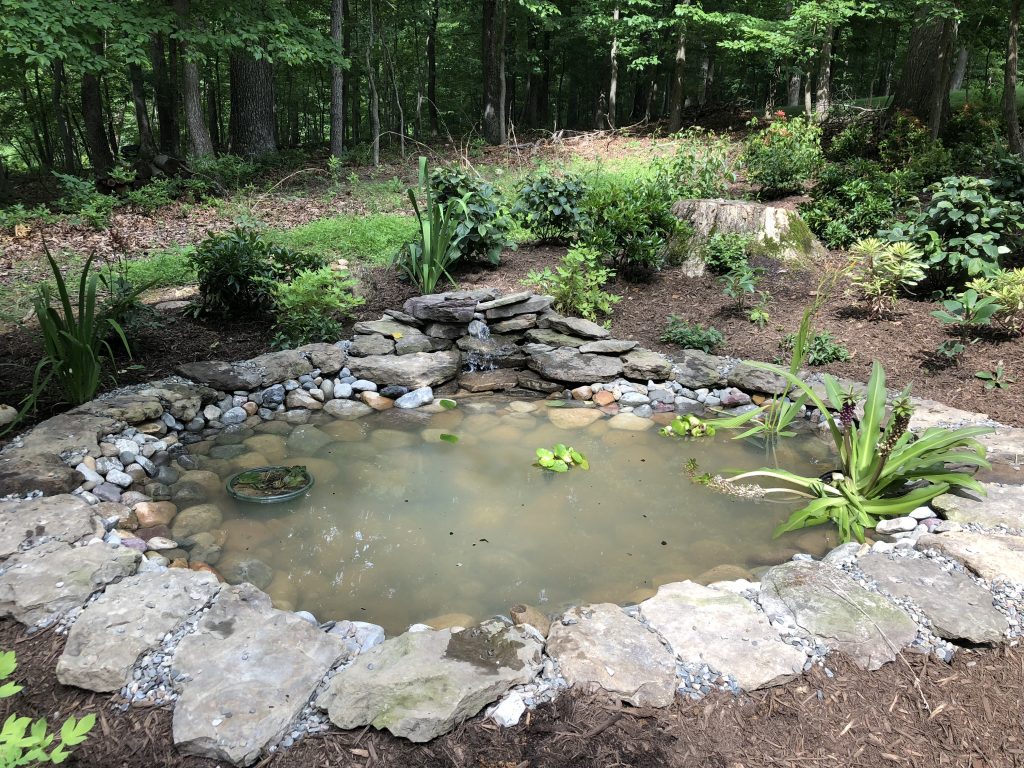
Water source for pollinators
3. Plant a variety of native plants from the main pollinator friendly plant families Aster, Monarda, Solidago, Asclepias, Eupatorium, Pycnanthemum. These aren’t by any means the only pollinator friendly plant families- these are just the ones shown to be visited the most by pollinators as researched by Kevin Heffernan of the Howard County Bird Club. Please reference his AWESOME list Howard County Pollinator Plants to see which species support local pollinators. In addition to planting a variety of native plants for pollinators, also plant a variety of blooms for different seasons. Pollinators need to eat from early spring to late fall so cover all seasons. There are lots of beneficial shade pollinator plants for spring blooms like Polemonium, Tiarella, Iris veriscolor and cristata, Asarum canadensis, Heuchera americana, Geranium maculatum, Phlox divaricata, Phlox stolonifera, Carex pennsylvanica, Carex laxiculmis and many other Carex species and Aquilegia canadensis to name a few. Spring blooming full sun pollinator plants include Phlox subulata, Tiarella cordifolia, Polemonium repens, Geranium maculatum, Summer blooming sun favorite pollinator plants include Clethera alnifolia, Lobelia siphilitica, Lobelia cardinalis, Asclepias tuberosa and incarnata, Pycnanthemum muticum and virginianum, Penstemon digitalis, Eupatorium maculatum, dubium, perfoliatum, Heliopsis helianthoides, Echinacea purpurea, Amsonia tabernamontana, Rudbeckia species, Liatris spicata and microcephala, Coreopsis species, Chelone and much more! Fall blooming sun pollinator plants include Solidago species, Aster species and many of the summer bloomers continue to bloom in to fall. This is just a quick list of favorites, check our online plant library to see more options for your site conditions!
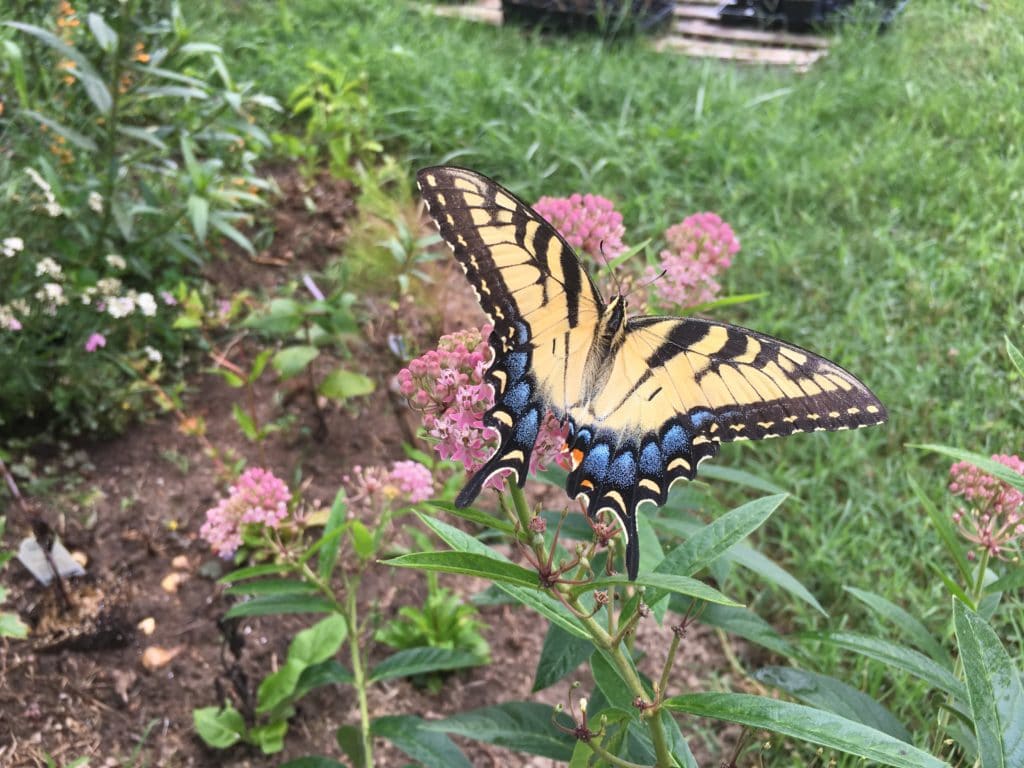
Swallowtail on Asclepias incarnata
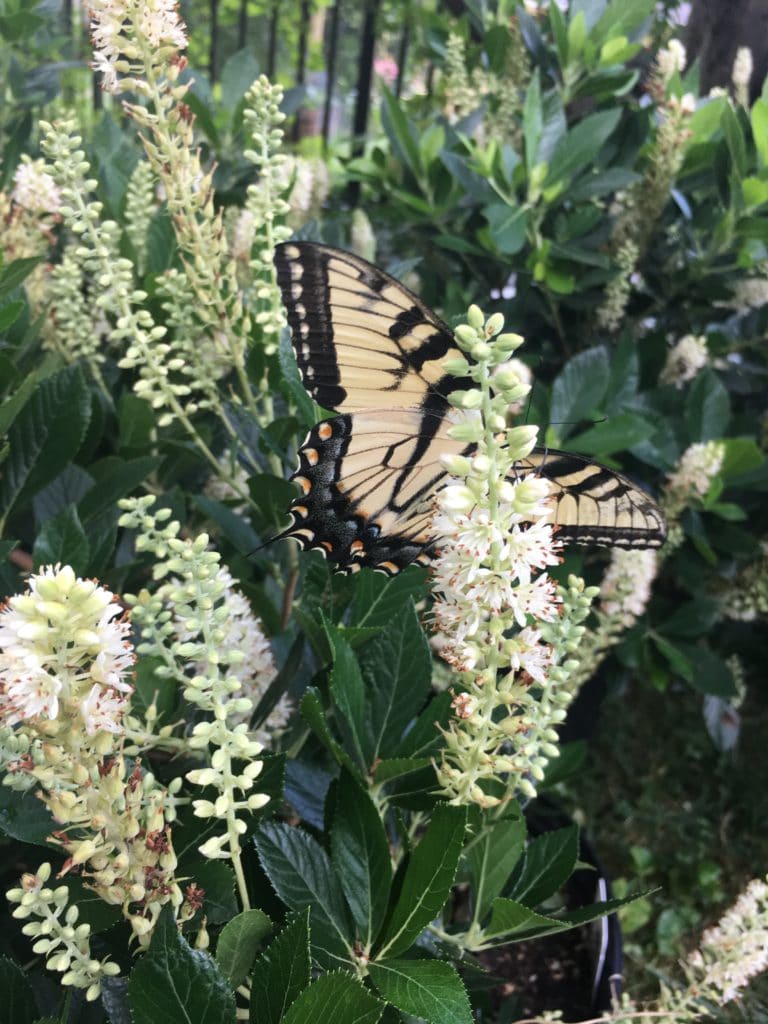
Swallowtail on Clethera alnifolia
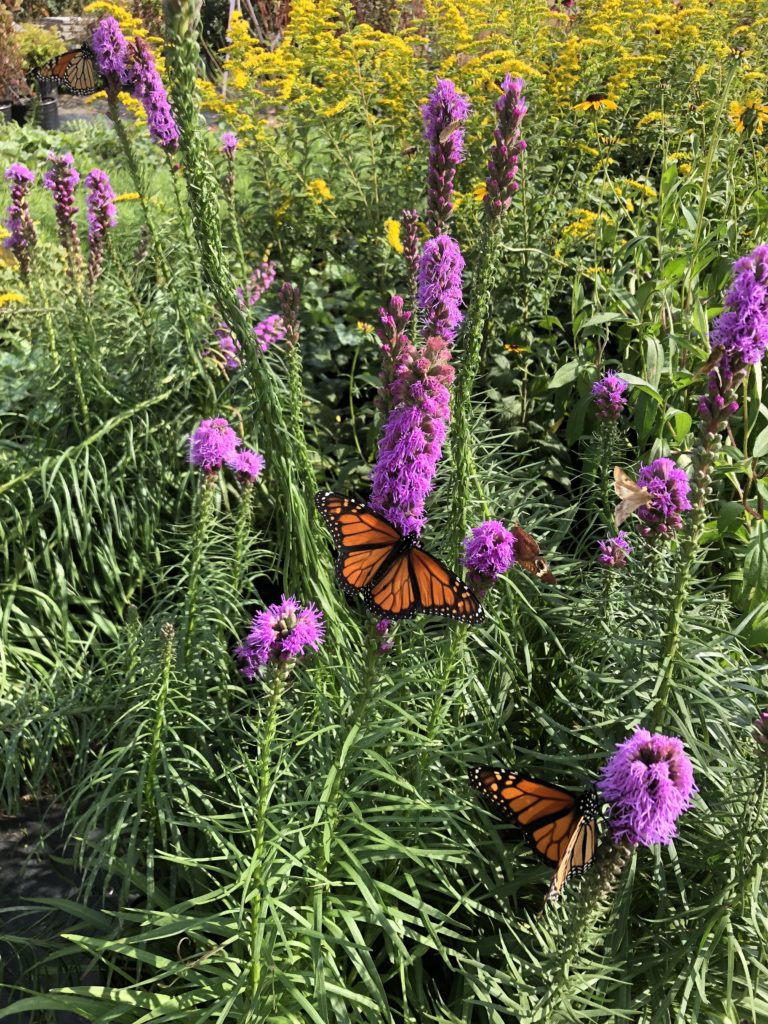
Monarch on Liatris spicata
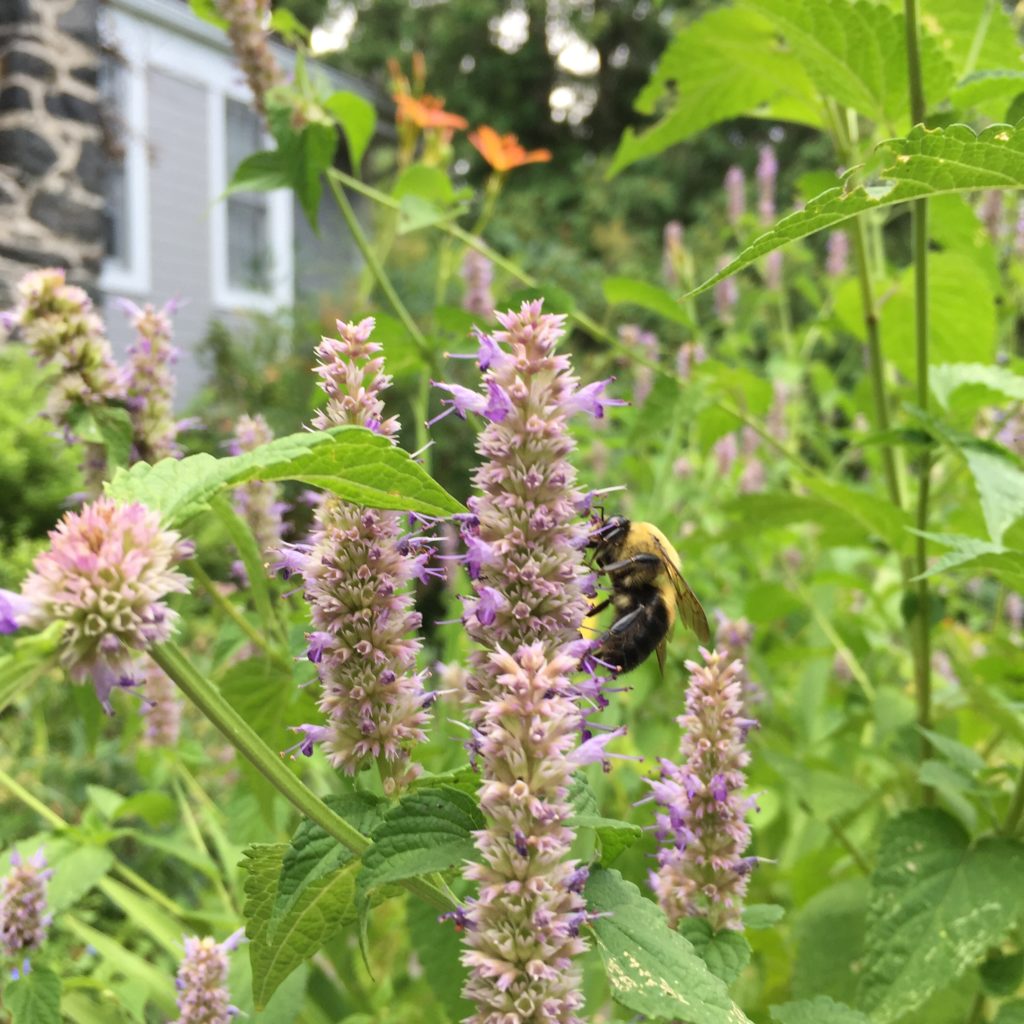
Bee on Agastache
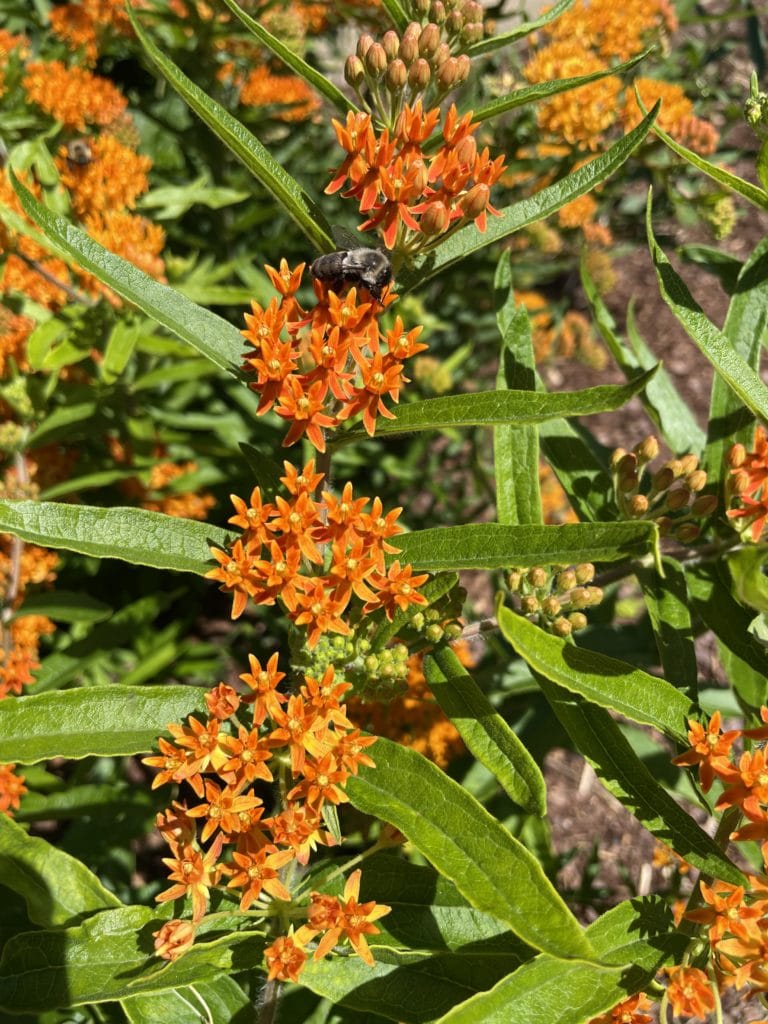
Black Swallowtail on Asclepias tuberosa
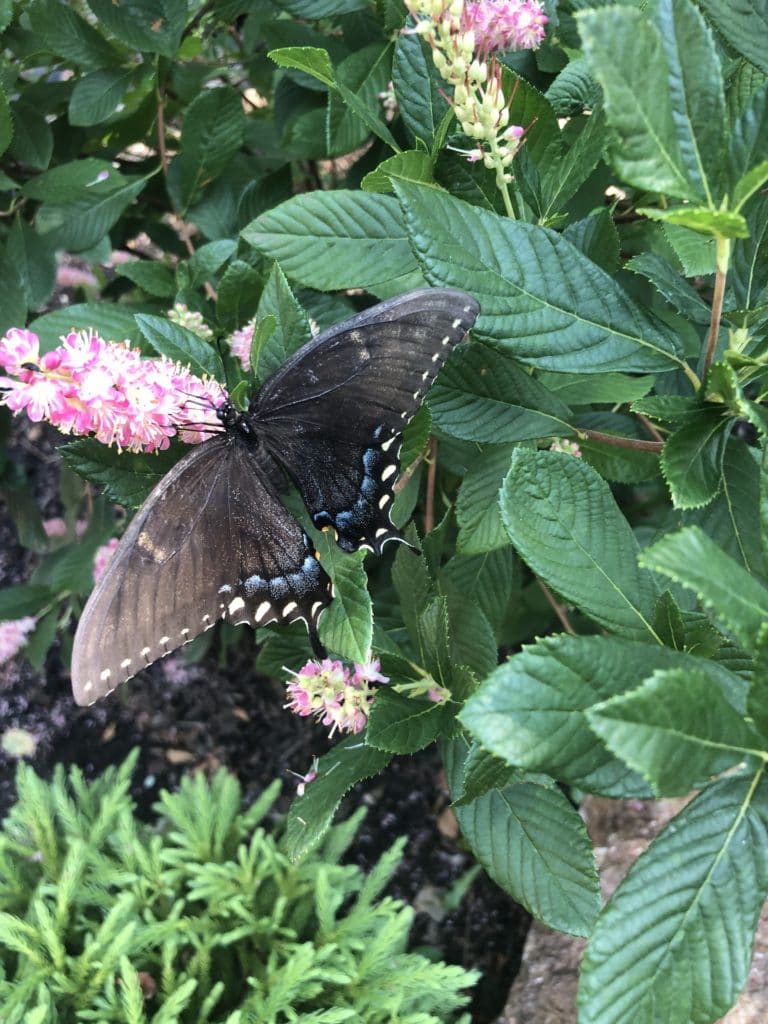
Black Swallowtail on Clethra Ruby Spice
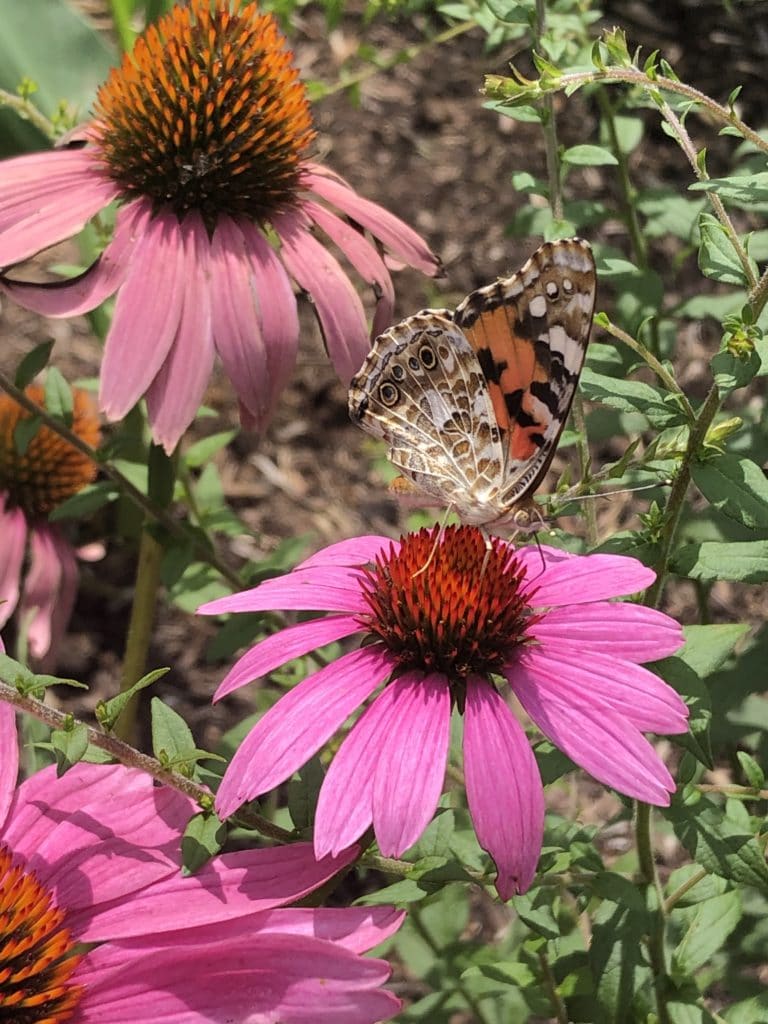
Buckeye on Echinacea purpurea
2. Increase your planted, flowering habitat (reduce lawn). Even installing a 100sq ft pollinator bed can make a big impact on supporting local pollinators. Anything that replaces turf grass will increase habitat for pollinators! Take some notes from our favorite native pollinator plants above, use our Online Plant Shop to our Online Plant Library to help you search for plant selections for your pollinator garden. Howard County Bee City Native Plant Subcommittee members created pollinator garden templates for different site conditions which are available here.
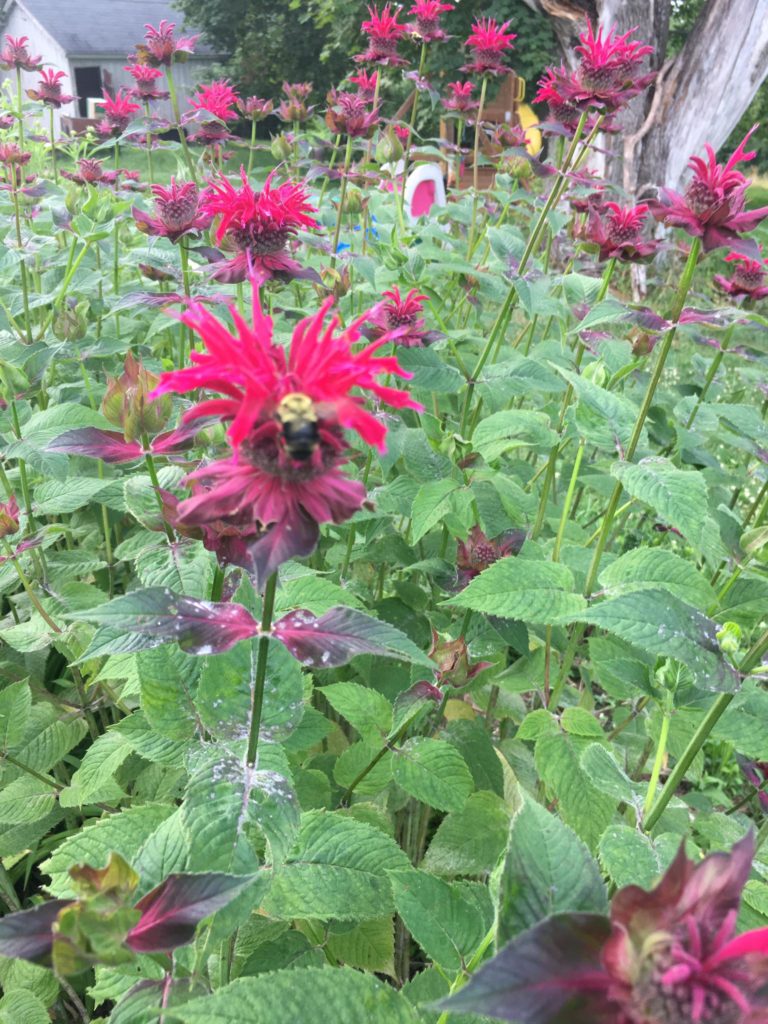
Bee on Monarda didyma
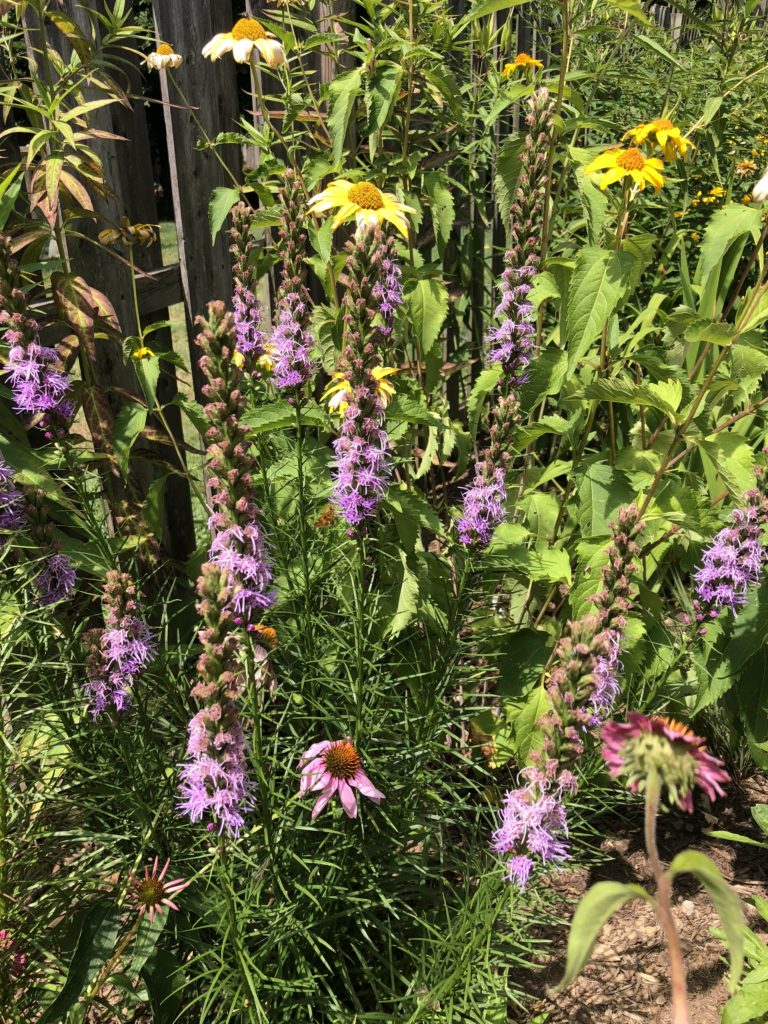
Liatris spicata, Heliopsis and Echinacea
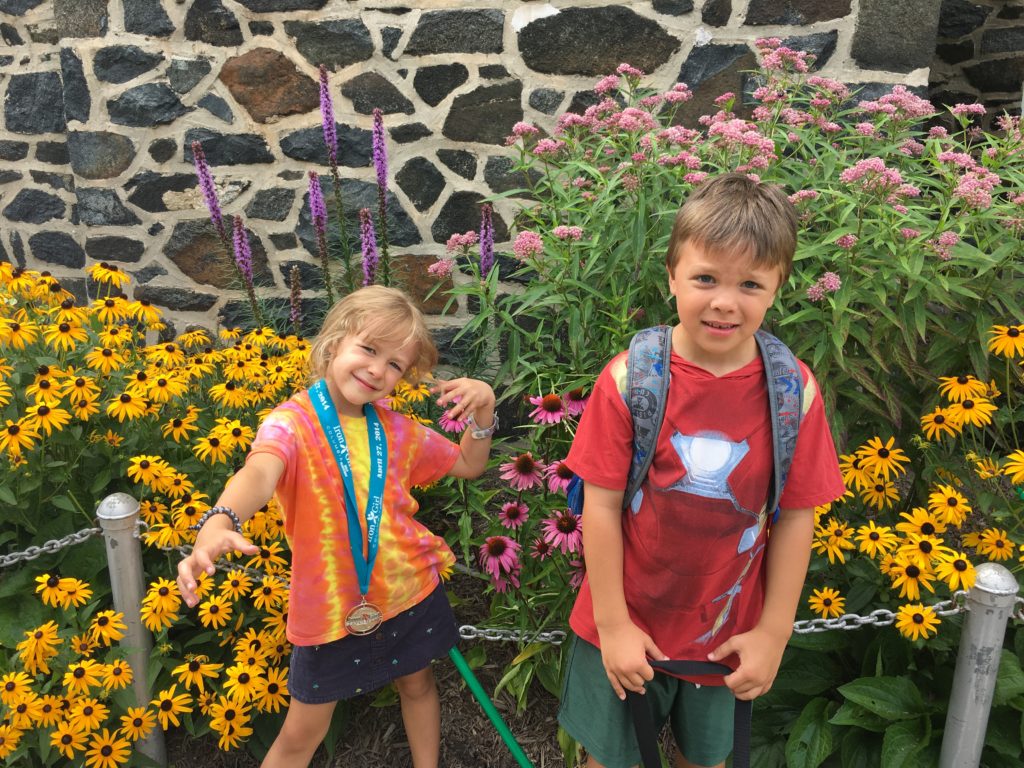
MDOW Preschool Pollinator Garden- safe for kids and pollinators, no pesticides or herbicides! Asclepias incarnata, Rudbeckia fulgida, Echinacea magnus, Liatris spicata.
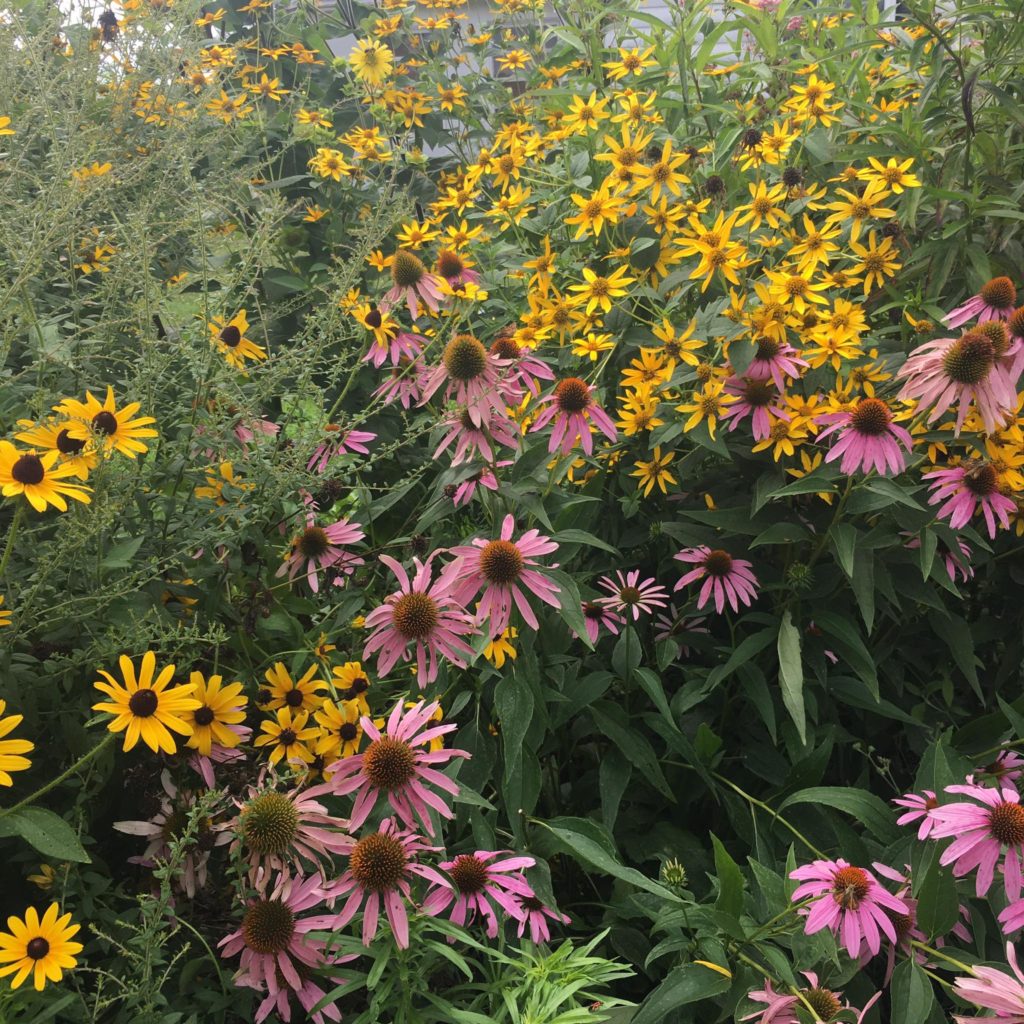
LGS Headquarters pollinator garden, year 2 after planting, before Fireworks goldenrod and Heliopsis helianthoides overtook all other plants! Pollinator garden species will move, increase and decrease over time, this is normal!
1. Stop using pesticides and herbicides! These harsh chemicals aren’t needed in a residential setting to maintain a healthy lawn and garden. Shift your thoughts on what a ‘healthy lawn’ looks like (that may include clovers, violets, dandelions and a few other species that support pollinators). Create a healthy garden by watering sufficiently, adding leaf compost to your garden beds, mulching with pine fines and other high quality mulch that breaks down and adds to the health of the soil. Mow your lawn with a mulching mower so you minimize the nutrients you remove off of your lawn. Weed your garden beds by hand early and often before weeds go to seed. Hire an eco friendly landscape business to get you started or help maintain your beds on a regular basis or a one time visit to help you get back in control of your garden space. Pesticides and synthetic fertilizers and other chemicals aren’t necessary and are harmful for local wildlife, pollinators and water quality.
If you decide to remove turf grass or invasive plants and plant native pollinator plants instead please click here to register your habitat with Howard County Bee City! More information about supporting pollinators can be found here on the LiveGreenHoward website.
Happy Pollinator Week!

